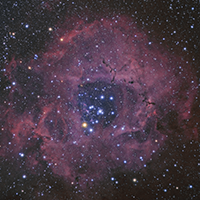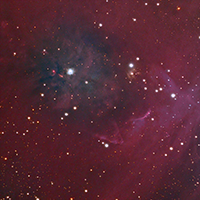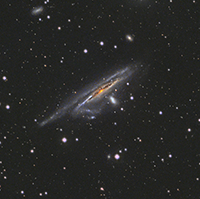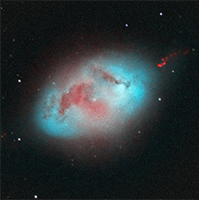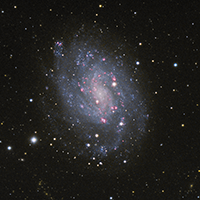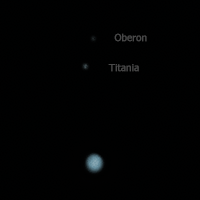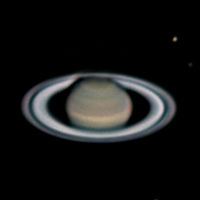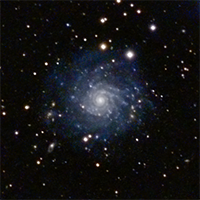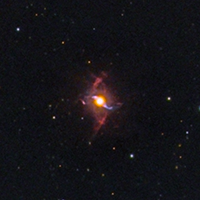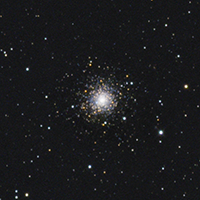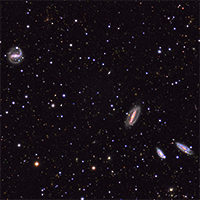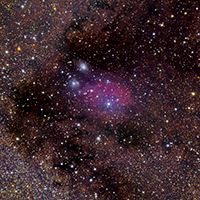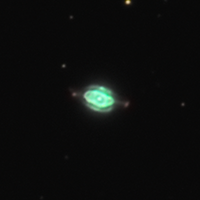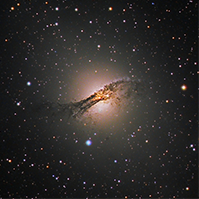A collection of astronomical photos taken by Adam Lundie at Eatons Hill Observatory.
Equipment Used:
- Telescope 1: Celestron 1100 Edge HD
- Telescope 2: Skywatcher Esprit 120ED
- Telescope 3: Skywatcher Black Diamond 80ED
- Mount: Skywatcher EQ8-Rh Pro
- Imaging Cameras: QSI 683ws-8 Monochrome, ZWO ASI290MM
- Filters: Astrodon Tru-Balance Gen 2 LRGB, Astronomik CLS-CCD, 6nm Hα, 6nm SII, 6nm OIII, ProPlanet 742nm IR-pass
- Guide Camera: Starlight Xpress Lodestar X2
- Guiding Optics: Skywatcher Evoguide 50ED, Innovations Foresight ONAG, Starlight Xpress Large Format Active Optics
- Focusers: Starlight Instruments Feather Touch + Posi Drive Motor
|
|
||
Recent Work:
21-Jan-2018
The Rosette Nebula is an emission nebula 3000 light years away. The central area of the nebula contains an open cluster of hot, blue stars which have cleared much of the center of its gas.
08-Jan-2018
NGC 1999 is a dusty blue reflection nebula, embedded in the hydrogen dust cloud of Orion. This narrow band enhanced image shows the light blue NGC 1999 at the center, with the edge of M42 (the Orion Nebula) at the far right. Also shown in the image is the waterfall nebula, the magenta shock wave between NGC 1999 and M42.
25-Dec-2017
50 million light years away, NGC 1532 is slowly devouring one of its companion dwarf galaxies, NGC 1531. Large tidal tails from NGC 1532 are thrown outwards as the two galaxies interact. A number of other dwarf companion galaxies are also visible in the frame.
28-Nov-2017
NGC 1360 is known as the Robin's Egg Nebula, primarily due to its blue hue from strong oxygen-III emissions. It is a diffuse planetary nebula 1794 light years away. Presented is a narrowband image with H-alpha emissions mapped to red, and OIII emissions mapped to both green and blue (HOO palette).
08-Nov-2017
NGC 300 is a spiral galaxy in the constellation Sculptor. It is one of the closest galaxies to the Local Group at 6 million light years distance.
28-Oct-2017
Uranus and two of its very dim larger moons, Titania and Oberon.
25-Oct-2017
Saturn and some of its many moons in infrared, red, green, and blue filters, taken with a new ZWO ASI 290MM high speed planetary camera.
27-Sep-2017
IC 5332 is a very faint spiral galaxy 39 million light years away. It is a challenging target in light polluted skies. While processing the image I noticed several small galaxies around and in the background of its spiral arms. I'm interested in revisiting this target again with a longer focal length to see what detail I can tease from these.
21-Sep-2017
R Aquarii is a symbiotic star system where a white dwarf is drawing material from its binary red giant companion. The extra material is then ejected into space in loops and jets.
11-Sep-2017
Messier 75 is a dense globular cluster 65000 light years away. This test shot is the first published photo from my new 10" f/4 newtonian telescope, and it's been quite a journey to get a nice field corrected image from it. Now I wait for the new moon and a suitable target.
20-Aug-2017
The Grus-Quartet consists of four large spiral galaxies, between 63 and 99 million light years away, which are so close to each other that they are interacting.
17-Aug-2017
Sh2-37 is a hydrogen emission nebula with two small blue reflection nebulae, embedded in a dusty background against the core of the Milky Way.
11-Aug-2017
After a brief hiatus from astronomy to build a new, larger observatory, I've chosen another difficult target that was surprisingly bright.
12-May-2017
Centaurus A is a peculiar galaxy discovered in 1826 by Scottish astronomer James Dunlop in Parramatta, Australia. It is ~10-16 million light years away and its lenticular with dust lanes hybrid appearance is the result of a merge of two galaxies.
27-Apr-2017
Inside the Rho Ophiuchi cloud complex live the star clusters IC4604 (left) and IC4603 (right). Heading towards the bottom of the image shows the transition from blue reflection nebulae to red emission nebulae. Interspersed are dark absorption nebulae, blocking the light from the stars behind them.
